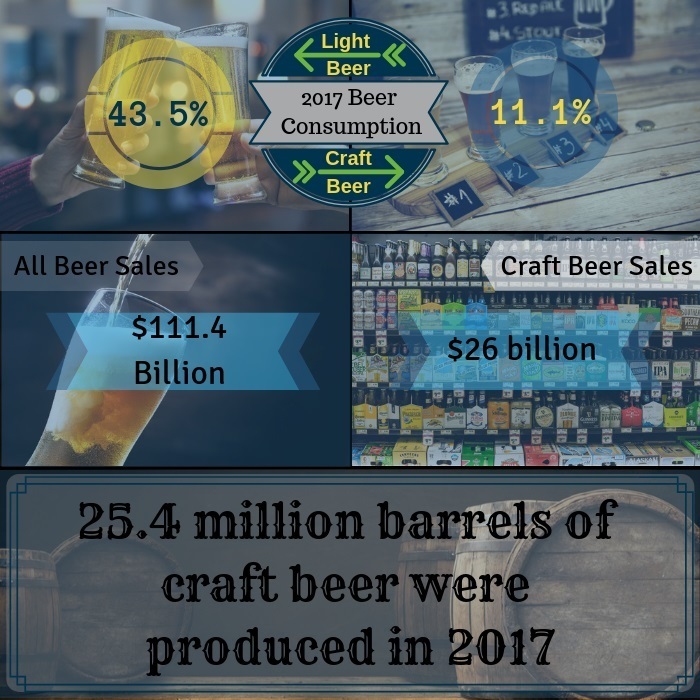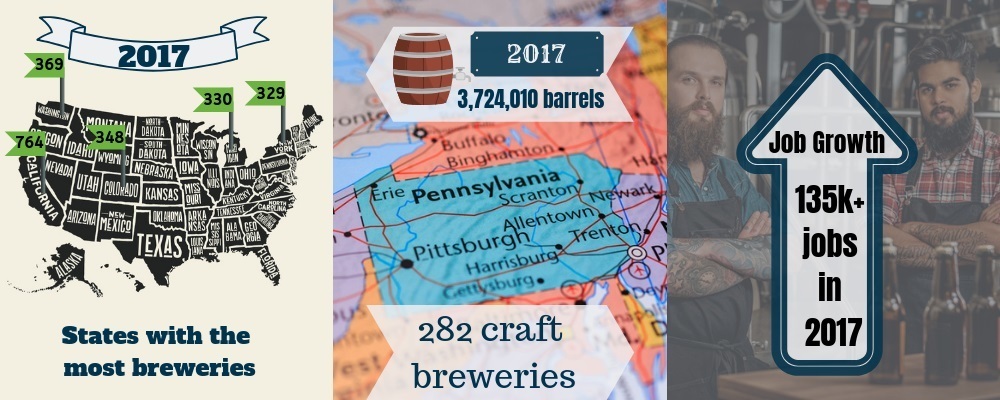Wine may be fine, and liquor may be quicker, but beer is the champion of cheer. Whether it’s a frosty light lager at a sporting event, or a flavor-intense IPA at a hole-in-the-wall dive bar, beer has a mass appeal that stretches across many demographics.
The History of National Beer Day
Every year on April 7, we celebrate National Beer Day, which commemorates a historic moment in U.S. history: On this day in 1933, President Franklin D. Roosevelt signed the Cullen-Harrison Act into law, legalizing the sale and purchase of beer containing 3.2% or less alcohol.
While 3.2% alcohol is fairly low, especially compared to the percentage of alcohol in many beers today, which generally ranges between 4% and 13%, with some brews even reaching more than 67%, it was a huge cause for celebration at the time. People were so excited to be able to drink beer legally again that they started lining up outside of bars and breweries the night before.
Within 24 hours of the law being enacted, the public collectively drank 1.5 million barrels of beer. To put that in perspective, that’s approximately 24% of the amount of beer that was consumed in the U.S. during the entire year of 2017, which was roughly 6.3 million gallons.
Since then, the beer industry has exploded in popularity. Although light domestics such as Bud Light and Coors Light tend have traditionally dominated the market, for National Beer Day this year, we’re saluting the craft beer industry.

Top Panels: According to the 2018 Liquor Handbook, published by Beverage Information Group, an industry research and insights company, the vast majority of beer consumed in America in 2017 was light beer, which accounted for 43.5% of beer consumption. Craft beer accounted for 11.1% of beer consumption.
Middle Panels: In 2017, the overall beer market sold $111.4 billion worth of product; out of the total, $26 billion was for the craft beer market, which is over 23% of the overall beer market.
Bottom Panel: Craft breweries produced 25.4 million barrels in 2017, and are projected to reach a production volume of 37.4 million barrels by 2020.
What is craft beer exactly? According to the Brewers Association, craft beer brewers are defined by two characteristics: They produce only 6 million barrels of beer or less a year, and they are independently owned, which means that “less than 25 percent of the craft brewery is owned or controlled (or equivalent economic interest) by a beverage alcohol industry member that is not itself a craft brewer.”
These beers are made using innovative techniques by brewers who reject the status quo. With their bold flavors and ingenuity, these brews have come to represent a uniquely American sense of individualism.
The Story of Craft Beer
The popularity of craft beer is a somewhat new phenomenon, and began disrupting the beer industry only a few decades ago.

Panel 1: The craft brewery industry has more than quadrupled in the past decade. In 2007, the number of operating craft breweries in the U.S. was 1,459; ten years later, in 2017, there were 6,266 craft breweries in operation.
Panel 2: Of the 6,266 craft breweries in operation, 2,252 were brewpubs, 3,812 were microbrewers, and 202 were regional.
Panel 3: Although regional breweries represent the smallest share of craft brewery types, they produce a whopping 70.6% of all craft beer, as of 2017.
Prior to the Prohibition era, German-style lagers and Czech-style Pilsners dominated the American beer market. These beers were relatively simple but used a blend of hops and grains to create a distinctive flavor. This all changed when the Prohibition amendment took effect in 1920, throwing the entire beer industry into disarray.
By the time Prohibition was repealed through the ratification of the 21st Amendment on December 5, 1933, the damage to the craft beer industry had already been done. The higher-quality ingredients that had been used prior to Prohibition were replaced with rice and corn, resulting in much lighter versions of the previous lagers and Pilsners.
For many years following the Prohibition era, these light beers were the only brews being offered in bars and stores. Then, in 1965, Fritz Maytag, great-grandson of Frederick Louis Maytag I, founder of the Maytag appliance company, changed the course of beer history when he purchased Anchor Brewing Co.
Anchor Brewing Co. specialized in “steam beer,” a type of brew invented in California in the 19th century known for its distinctive hoppy flavor. Prior to Prohibition, there were several California breweries that made steam beer, but Anchor Brewing Co. was the only one able to survive Prohibition.

Panel 1: The states with the highest number of craft beer breweries in 2017 were California with 764, Washington with 369, Colorado with 348, Michigan with 330, and New York with 329.
Panel 2: However, the award for highest number of barrels of craft beer produced by a state in 2017 goes to Pennsylvania, with 3,724,010 barrels. Pennsylvania has 282 craft beer breweries.
Panel 3: The craft beer industry is a job maker — in 2017, this industry provided over 135,000 jobs to the U.S. market.
Although the company endured during a time when its competitors could not, Anchor Brewing Co. struggled to succeed, and was on the verge of closing before Maytag, who was an avid fan of steam beer, purchased the brewery. With Maytag’s vision at the helm, Anchor Brewing Co. rolled out a wide variety of full-flavored beers, which were very different from the typical lagers that dominated the shelves. Thus, the seed for the craft beer renaissance was planted.
Still, the beer industry was largely dominated by a few massive beer corporations. In fact, in 1979, there were only 44 operating breweries in America. However, in 1979, President Jimmy Carter signed a bill into law that made it legal for citizens to brew their own beers at home, which effectively opened the floodgates for enthusiasts to experiment with all kinds of ingredients and flavors, propelling the craft beer movement forward.
As a result, the 1980s saw a sudden proliferation of microbreweries and brewpubs bursting into the market, a trend that would continue well into the 1990s. These craft brewing pioneers rejected the mass-produced beers that had become the norm, and began to play around with different styles and unprecedented flavor combinations.
Today, the craft beer market continues to soar to new heights, becoming increasingly popular with every year that goes by. While mass-produced light beers are still at the top, craft breweries are taking a big chunk of American beer profits. This trend is expected to grow, especially as millennials are some of the biggest craft beer consumers.

Panel 1: Although the overall beer market went down in sales by 1% in 2017, craft brew sales increased by 5%.
Panel 2: Every year, craft beer grows in popularity. According to a poll from the Brewers Association, 35% of survey takers in 2015 drank craft beer several times a year or more. By 2018, the number bumped up to 40%.
Panel 3: Craft beer is also slowly becoming more popular among female consumers. In 2015, about 29% of the surveyed craft beer drinkers were female; in 2018, this number rose slightly to 31.5%.
Happy National Beer Day!
Perhaps the best thing about craft beer is that it reminds us of our roots, the importance of originality, and the fact that small businesses can shake up the marketplace in a big way, even in the presence of corporate giants. With that, we wish you a happy National Beer Day — cheers!

